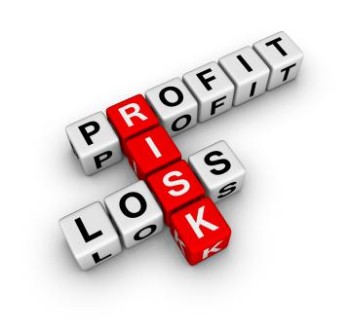Forex presents many opportunities to traders, but at the same time it can be easy to fall into a losing spiral and lose some, or all, of your investment. To prevent this happening, there are essential risk management rules that all beginners should follow.
In this article, we have outlined 6 trading habits that often lead you to lose money. Read them carefully and make sure that you don’t make any of these mistakes during your trading.
This post was provided by Peter Traychev, of LiteForex
Trading without applying a Risk-Reward ratio of at least 1:2
From the very first Forex trade you make on your live account, you should have used a risk reward ratio to determine if you should enter the trade and when you should exit it. A good risk reward ratio is 1:2, which means that your target profit is twice as large as your stop loss. This means that if the potential profit is $400 for a new trade, then the maximum loss you should settle for is $200. You can apply an even stricter risk-reward ratio of 1:3, which means that your target profit is three times as large as your potential loss. This way, even if you suffer a string of losses, you’ll protect the majority of your capital and can continue trading and try to recover.
Over-trading
Sometimes you might get overly excited about trading, and want to open too many trades at once. This is a bad sign because most likely you don’t have a clear trading plan and you’re letting your emotions control your trading. Try to set a limit of daily and weekly trades for yourself, and don’t go over this limit. If you see that you’re losing focus on the market, and are not able to spot new profitable trades, take a break. Don’t trade for a few days, and take the time to relax and clear your head. Once you feel energized and focused again, you can return to trading.
Trading without Stop Loss
The Stop Loss order should be your best friend when trading. If you’ve placed a Stop Loss, that means that you’ve calculated in advance the loss that you’re willing to take on a trade and you already have a plan. Many investors suggest that you should never risk more than 2% per trade, so you should set your Stop Loss level close to that. If you don’t place a Stop Loss order, then there is a big chance that if the market goes against you, the loss that you’ll suffer would be much larger than if you had placed the order originally. Remember that before you place a new order you should always have a profit and loss target, and you should stick to it.
Closing a winning position early
It’s OK to close a winning position early, since you’ll get a guaranteed profit, without risking to wait and earn more. However, a long-term successful strategy is to cut your losses early and to let your winning positions run. Once you’ve mastered this, you’ll be able to reap big benefits from trading.
Using too much leverage
Leverage allows you to place larger trades with less money. Some brokers even allow you to use up to 1:200 or even up to 1:1000 leverage. While it seems tempting to use large leverage, you should actually calculate carefully what is the right leverage level for you. This depends on the capital you have in your trading account. Also, remember that you should keep your maximum risk around 2% per trade. Many brokers allow you to change your leverage in your live account by logging into your online trading portal.
Lack of sufficient education
Are you still making some basic mistakes when trading on your live account? For example: placing larger orders than you can afford, not using the right order types, using a leverage level that’s not right for you, etc. Then maybe you should spend some more time practicing on your demo account. There is nothing wrong in having a demo account open and using it to improve your trading.
